Society Members News
This is our wall of fame, listing some of the recent achievements of the members of the Cancer Epigenetics Society in cancer and/or epigenetics research. These include groundbreaking research articles, grants, lectures, awards, and other accolades that our members have produced or received, and that have impacted cancer discovery and treatment. If you would like us to include your latest achievements, please send us and email us here.
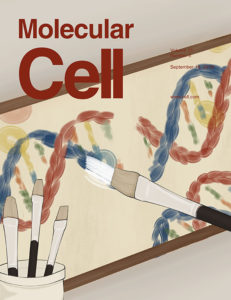
In press – Dr. C. David Allis (Rockefeller University, New York, NY, USA) and colleagues at Tsinghua University (Beijing, China) provide for the first time a general mechanism by which histone marks regulate chromosome compartmentalization by promoting phase separation. They show that heterochromatin protein 1 (HP1) interacts with the histone H3 methyltransferase SUV39H1 and the HP1 scaffolding protein TRIM28 to form complexes with increased multivalent engagement at H3K9me2 and H3K9me3-marked chromatin, and that this leads to structural compartmentalization of heterochromatin. This work was published in Molecular Cell; more here.
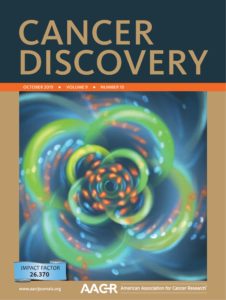
October 2018 – Dr. Jonathan Licht (University of Florida Health Cancer Center) and his colleagues at Northwestern University show that a glutamate 76 to lysine mutation in histone H2B is frequent in cancer, particularly in bladder and head and neck cancers. The authors show that this mutation disrupts histones H2B- H4 interaction, reduces nucleosome stability, and increases chromatin opening, leading to gene derepression and neoplastic transformation of human cellular models. This study shows that chromatin structure perturbation, here via histone mutations is causative of cancer. This work was published in Cancer Discovery; more here.

September 2019 – Dr. Keith Robertson (Mayo Clinic, Rochester, MN, USA) uncovered DNA methylation markers that differentiate between localized and advanced-stage papillary renal cell carcinoma. Dr. Robertson and his collaborators (Mayo Clinic, Scottsdale, AZ, USA and Shanghai General Hospital, Shanghai, China) propose the use of these epigenetic markers for the staging and prognosis of papillary renal cell carcinoma. The study was published in Cancer Medicine; more here.
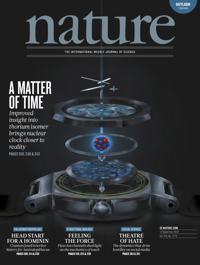
September 2019 – Dr. C. David Allis (Rockefeller University, New York, NY, USA) and colleagues at Columbia University, University of Pennsylvania, McGill University, and Tsinghua University suggested that the DNA methyltransferase DNMT3A and the NSD1 H3K36 dimethyltransferase work together. This was based on the fact that Tatton-Brown-Rahman syndrome (TBRS), a childhood overgrowth disorder characterized by germline mutations in DNMT3A and Sotos syndrome (caused by NSD1 haploinsufficiency) share clinical features. The authors indeed show that NSD1-mediated H3K36me2 is required for the recruitment of DNMT3A and maintenance of DNA methylation at intergenic regions in euchromatin. Accordingly, blood samples from patients with Sotos syndrome or NSD1-mutant tumors also exhibit hypomethylation of intergenic DNA. This work was published in Nature; more here.
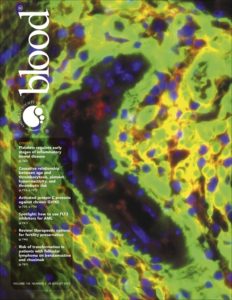
August 2019 – Dr. Owen O’Connor and his colleagues at Columbia University Medical Center conducted a phase I epigenetic combination therapy on patients with peripheral T-cell lymphoma (PTCL). Patients were treated with the hypomethylating agent 5-azacytidine and histone deacetylase inhibitor (HDACi) romidepsin. The authors found the maximum tolerated dose to be 300 mg of 5-azacytidine on days 1-14 and 14 mg/m2 of romidepsin on days 8, 15 and 22 on a 35-day cycle without any treatment-related deaths. They authors further found the epigenetic therapy not to be efficacious against non-T-cell lymphoma (complete and overall response in only 5% and 10% of patients, respectively). T-cell lymphoma patients fared better with 55% complete response and 73% overall response rates. This study was published in Blood; ; more here.
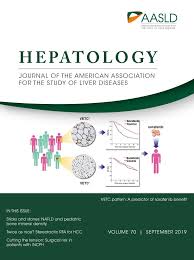
July 2019 – Dr. Keith D. Robertson (Mayo Clinic, Rochester, MN, USA) and colleagues at University of Florida and Rutgers University uncovered genomic hypomethylation in Alpha-1 antitrypsin deficiency (AATD) liver disease-impacting genes related to liver cancer, cell cycle, and fibrosis, as well as key regulatory molecules influencing growth, migration, and immune function. They further show that CpG methylation states to be linked to hallmark clinical features of AATD (e.g. hepatocyte degeneration and polymer accumulation) and to sex-specific effects of liver disease progression. This study indicates that 5mC landscapes may be used to stratify patients for liver disease risk and progression. This work was published in Hepatology; more here.
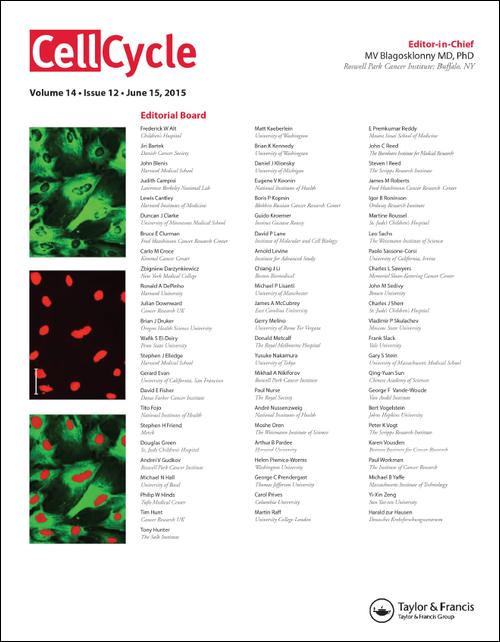
June 2019 – Dr. Raul Urrutia (Medical College of Wisconsin, Milwaukee, WI, USA) and his colleagues showed that S92-phosphorylated heterochromatin protein 1α (HP1α) is catalyzed by Aurora kinase B (AURKB) at early prophase and localizes to centromeres where it contributes to chromosome stability. HP1α mutants that lack phospho-Ser92 lead to mitotic chromosomal instability with anaphase/telophase chromatin bridges and micronuclei. Conversely, HP1α is required for full AURKB activity at the centromere. These findings unveil the critical role of the AURKB and HP1α epigenetic modifiers to genomic stability. The study was published in Cell Cycle; more here.

May 2019 – Dr. Raul Urrutia (Medical College of Wisconsin, Milwaukee, WI, USA) and his colleagues show that epigenetic silencing mediated by H3K9 methylation is essential for both biochemical and biomechanical fibroblast activation, and that targeting this epigenetic pathway may provide therapeutic benefit by returning lung fibroblasts to quiescence to overcome pulmonary fibrosis. Specifically, the authors show that the histone H3K9 methyltransferase G9a (EHMT2) and HP1α are essential to initiation and maintenance of fibroblast activation through epigenetic repression of peroxisome proliferator-activated receptor gamma coactivator 1 alpha gene (PPARGC1A, encoding PGC1α). Inhibition of HP1α/G9a pathway in fibroblasts elevates PGC1α, attenuates TGFβ- and matrix stiffness-promoted H3K9 methylation, and reduces collagen accumulation in the lungs following bleomycin injury. The study was published in JCI Insight; more here.
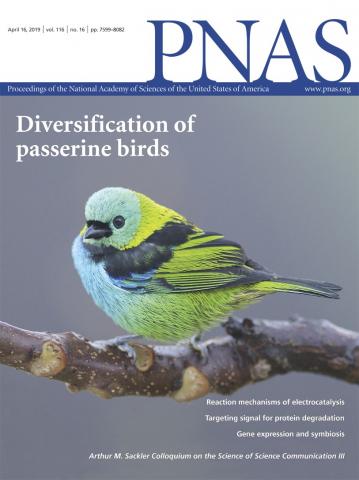
April 2019 – Dr. C. David Allis and his colleagues (Rockefeller University, New York, NY, USA) found that suppression of cholesterol synthesis with a small molecule drug in both childhood diffuse intrinsic pontine glioma (DIPG) and adult glioma leads to the synthesis of the endogenous liver X receptor ligand 24,25-epoxycholesterol. This in turn leads to cholesterol depletion and glioma cell death. Dr. Allis and coll. also show that the target of the drug is lanosterol synthase, an enzyme of the cholesterol biosynthetic pathway which catalyzes the synthesis of the first sterol used to synthesize cholesterol. This research provides the first evidence that cholesterol control may provide a treatment to the deadly DIPG. The study was published in P.N.A.S. USA; more here.
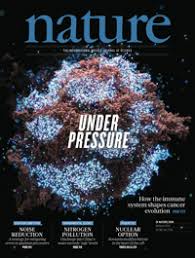
March 2019 – Dr. Stephan Beck (University College London, London, UK) and his colleagues at TRACERx (TRAcking Cancer Evolution through therapy (Rx)) consortium looked at immune escape during lung cancer progression. They found that sparsely infiltrated tumors show a waning of neoantigen editing during tumor evolution. Immune-infiltrated tumor regions exhibited ongoing immunoediting, with either loss of heterozygosity in human leukocyte antigens or depletion of expressed neoantigens. The authors identified promoter hypermethylation of genes that contain neoantigenic mutations as an epigenetic mechanism of immunoediting. This study supports a mechanism whereby the immune microenvironment exerts a selective pressure on early-stage non-small-cell lung cancers. This in turn leads to immune evasion, tumor progression, and poor disease-free survival. . This work was published in Nature; more here.

March 2019 – Dr. C. David Allis and his colleagues (Rockefeller University, New York, NY, USA) mapped for the first time more than 4,000 histone missense mutations across 183 different tumor types in more than 3,000 patients. They found oncohistone mutations that circumvent SWI/SNF function in other organisms, as well as those that would disrupt the H2B-H4 interface. Some of these epimutations affect the majority of patients in certain cancers, including diffuse intrinsic pontine gliomas, chondroblastomas, and giant cell tumors of the bone. This work was published in Nature; more here.
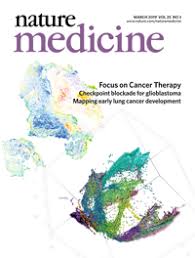
March 2019 – Dr. Stephan Beck (University College London, London, UK) and his colleagues studied how lung cancer becomes invasive and turns into full blown squamous cell carcinoma. This work lays down the bases of early lung carcinogenesis and is expected to provide biomarkers for early cancer detection, prognostic factors, and drug targets. The authors showed that progression from lung carcinoma in situ to squamous cell carcinoma is associated with the differential expression of TPM3, PTPRB, SLC34A2, KEAP1, NKX2-1, SMAD4, and SMARCA4, as well as the epigenetic activation of homeobox genes (HOXC8, HOXC9, HOXC10, HOXD10, HOXA11AS) and epigenetic inactivation of NKX2-1. The authors also developed a predictive model for lung cancer progression which should help in treatment management. This work was published in Nature Medicine; more here.
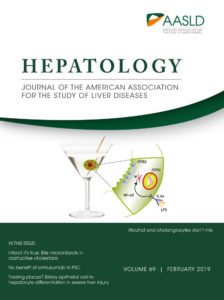
February 2019 – Dr. Keith D. Robertson (Mayo Clinic, Rochester, MN, USA) and colleagues at Rutgers University show the deregulation in hepatocellular carcinoma (HCC) of epigenetic modifiers combined with epigenome loss of 5hmC, locus-specific gains in 5mC and 5hmC, and markedly altered H3K4me1, H3K27ac, H3K4me3, and H3K27me3 histone marks, particularly at enhancers. The study also show that these epigenetic marks collaborate to influence the transcription of genes that regulate HCC proliferation and that hyper-5hmC in HCC-gained active enhancers is linked to elevated gene expression. The authors also show that the epigenetically repressed COMT and FMO3 genes induce apoptosis and decrease cell viability upon reactivation in liver cancer cell lines. This study underscores the importance of DNA and histone epigenetics in HCC tumor pathology; more here.
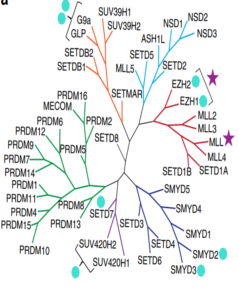
January 2019 – Dr. Cheryl Arrowsmith (Structural Genomics Consortium, University of Toronto, Toronto, ON, Canada) and colleagues developed a collection of chemical probes to explore the function of protein methyltransferases (PMTs), a major class of epigenetic regulatory enzymes with therapeutic relevance. The authors show the collection of inhibitors and antagonists to modulate most of the key epigenomic regulatory methylation marks on histones H3 and H4. As an example, epigenetic chemical probes in this collection modulate CD4+ T cell differentiation, and individual probes alter multiple T cell subpopulations with possible applications in inflammation and immuno-oncology. Using probes, the authors also uncovered a role for DOT1L in limiting Th1 cell differentiation and maintaining lineage integrity. This work was published in Nature Communications.; more here.
September 2018 – Dr. C. David Allis (Rockefeller University, New York, NY, USA), a Member and Officer of the Cancer Epigenetics Society won the prestigious 2018 Albert Lasker Basic Medical Research Award. The Lasker Award website states that it “honors his discoveries on how gene expression is influenced by chemical modification of histones, the proteins that package DNA within chromosomes”. It goes on to say that “C. David Allis uncovered an enzyme that attaches a specific chemical group to a particular amino acid in histones, and this histone-modifying enzyme turned out to be an established gene co-activator whose biochemical capabilities had eluded researchers”. It adds that “Allis unveiled a previously hidden layer of gene control and broke open a new field”. Dr. C. David Allis shares this prestigious award with Michael Grunstein (UCLA, Los Angeles, CA, USA); more here.

September 2018 – Dr. Raul Urrutia (Mayo Clinic, Rochester, MN, USA) and his colleagues at Northwestern University show that inhibitors of bromodomain and extra-terminal (BET) proteins that target BRD4 decrease interferon-γ (IFN-γ)-induced PD-L1 expression in pancreatic stellate cells (PSCs). Activation of PSCs in pancreatic ductal adenocarcinoma (PDAC) leads to fibrosis. The authors further show that interferon regulatory factor 1 (IRF1) mediates IFN-γ-induced PD-L1 expression in PSCs, and that BET inhibitors decrease binding of IRF1 and BRD4 to the PD-L1 promoter, leading to down-regulation of PD-L1. These results indicate the potential use of BET inhibitors in the immunomodulation of PDAC.; more here.
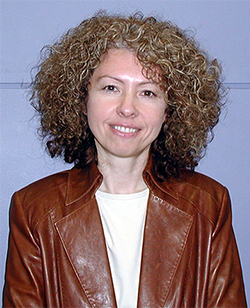
October 2017 – Tatiana Kutateladze, University of Colorado, showed for the first time that the protein partner of Sans-fille (PPS), a regulator of stemness genes, and which together with sex-lethal regulates alternative splicing in Drosophila, as well as its human homolog DIDO, are pH-dependent histone H3 trimethylated lysine 4 (H3K4me3) readers. The interaction of PPS PHD finger with H3K4me3 is favorable at higher pH owing to the protonation of a histidine in the aromatic cage of the PHD finger in acidic environments. These findings indicate that intracellular pH fluctuations that accompany several physiological and pathological processes, including cancer, can modulate epigenetic processes and ultimately the biology of the cell; more here.

August, 2017 – I.M. Bennani-Baiti, President of the Cancer Epigenetics Society, was inducted into the Royal Society (of London), Section of Medicine, as a Fellow. Dr. Bennani-Baiti is the fourth Cancer Epigenetics Society member to join the ranks of the prestigious Royal Society Fellows after Sir Shankar Balasubramanian (University of Cambridge), Christopher J. Schofield (University of Oxford), and Arasu Ganesan (University of East Anglia). Some of the greatest scientific minds are or were Fellows of the Society, including Sir Isaac Newton, Charles Darwin, Louis Pasteur, Stephen Hawking, Albert Einstein, and 280 Nobel Prize laureates.
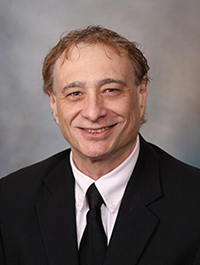
July, 2017 – Raul Urrutia, Cancer Epigenetics Society Chief Science Officer, is the new Director of the Human and Molecular Genetics Center (HMGC) at the Medical College of Wisconsin. HMGC, previously led by Howard Jacob, is one of the centers associated with the human genome project and is a leader in using genomic information in improving patient’s treatment outcome. HMGC was the first center to perform clinical exon sequencing, thus launching Precision Medicine in the USA. Under Dr. Urrutia’s leadership, the Center will expand its research on how genetic and epigenetic variants impact gene expression and associate with cancer as well as with certain rare diseases.

July, 2017 – Ashwin Unnikrishnan and coll., Lowy Cancer Research Centre at University of New South Wales (Sidney, Australia) identified a mechanism of resistance of Myelodysplastic Syndrome (MDS) to the DNA demethylating agent 5-Aza, the only drug approved for MDS treatment. They found that quiescent MDS cells were more resistant to 5-Aza than actively dividing cells, and 5-Aza-resistant patients had more quiescent cells than responders. They further identified Integrin α5 (ITGA5) as a mediator of quiescence, indicating that combination therapies of ITGA5-inhibitors and 5-Aza may circumvent resistance in MDS. This work was reported in the July 18th issue of Cell Reports and may be accessed here.

June, 2017 – Raul Urrutia (Mayo Clinic, Rochester, MN, USA) delivered a lecture entitled Epigenomic Landscapes of Pancreatic Cancer: A Precision Medicine Approach. Therein he presented how the use of multi parametric ChIP-Seq/RRBS/RNA-Seq analyses gives insights into cancer heterogeneity and reveals novel markers and targets of translational value (10th ISABS Conference on Forensic and Anthropologic Genetics and Mayo Clinic Lectures in Individualized Medicine, Dubrovnik, Croatia, 19-24 June 2017).
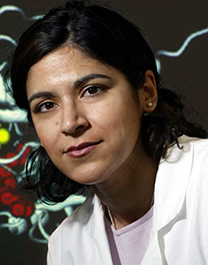
June, 2017 – Nita Ahuja and coll. demonstrated that 5-aza treatment of colon and ovarian cancer cell lines leads to significant re-expression of genes involved in antigen processing and presentation, by activating the type I interferon response, and this lasts up to 21 days after treatment. Further investigations showed that 5-aza upregulates the MHC I antigen presenting complex on the surface of colon and ovarian cancer cells. This study was recently published and is available here.

May, 2017 – Nora Bennani and coll. at the Mayo Clinic (Rochester, MN, USA) demonstrated for the first time in a phase II open label clinical trial the efficacy of oral mTORC1 inhibitor everolimus (10 mg daily on a 28 day-cycle schedule) in relapsed or refractory indolent lymphoma. ORR was 35% (95% CI: 24-48%), reaching 61% in patients with follicular lymphoma, showing that everolimus monotherapy is a valid therapeutic option in relapsed and/or refractory indolent non-Hodgkin lymphoma patients. These studies were published in Am J Hematology and may be accessed here.

April, 2017 – Giacomo Cavalli and his team at the University of Montpellier (Montpellier, France) demonstrated the transgenerational effect of Polycomb Group of proteins (PcG)-mediated chromatin modifications in Drosophila melanogaster. The Cavalli team noted that depending on environmental conditions, eye-color varied in isogenic flies, and this phenotypic variation was stably transmitted across successive generations. This epigenetic “memory” could be rewritten again by changing environmental cues. This work was recently published in Nature Genetics (NPG) and may be accessed here.
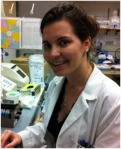
April, 2017 – Bojana Jovanovic, previously a Research Fellow at Harvard Medical School and Dana-Farber Cancer Institute, is now a Postdoctoral Fellow at the Broad Institute of MIT and Harvard University (Cambridge, MA, USA). Dr. Jovanovic has been studying the importance of epigenetic heterogeneity in triple negative breast cancer. The Society congratulates Bojana on all her achievements and on the new Position at the Broad Institute!

April, 2017 – I.M. Bennani-Baiti at the Cancer Epigenetics Society was elected to the organizing committee of the 2nd International Congress on Epigenetics and Chromatin taking place on November 6-8 this year (Frankfurt, Germany). This meeting will bring experts from around the world to discuss their latest on epigenetics, epigenomics, pharmacogemomics, nutrition, transgenerational epigenetics, and cancer. More on this meeting and its program may be found here.

April, 2017 – Kiran Batta, formerly a Postdoctoral Fellow at Cancer Research UK, was appointed Oglesby Leukaemia Research Fellow and Group leader at University of Manchester (Manchester, UK). Dr. Batta studies chronic myelomonocytic leukaemia (CMML), a cancer whereby 90% of patients display recurrent mutations in epigenetic modifiers. The Society congratulates Dr. Batta on his promotion and work in the field of cancer epigenetics.

April, 2017 – Hani Choudhry, CEO of Innovative Biomed Co., Director of Central Laboratories, and Head of Cancer Metabolism and Epigenetics Research Unit at King AbdulAziz University (Jeddah, Saudi Arabia), was appointed Visiting Assistant Professor at Stanford University School of Medicine & NIH Centers of Excellence in Genomic Science (Stanford, CA, USA). The Society congratulates Dr. Choudhry on his appointment and contributions to the field of cancer metabolism and cancer epigenetics!

March, 2017 – Leigh Ellis, formerly an Assistant Member at the Department of Pharmacology and Therapeutics at Roswell Park Cancer Institute (Buffalo, NY, USA), was appointed Member of Faculty of Pathology at the Department of Oncologic Pathology at the Dana-Farber Cancer Institute and Brigham and Women’s Hospital, Harvard Medical School (Boston, USA). The Society congratulates Dr. Ellis on his promotion and his work on the epigenetics of metastatic castrate-resistant prostate cancers.

January 2017 – Leigh Ellis and coll. at Roswell Park Cancer Institute (Buffalo, NY, USA) showed that mutant PTEN and loss of RB1 cooperate to drive cell lineage plasticity and metastasis of prostate adenocarcinoma, and that p53 mutation induces antiandrogen therapy resistance and epigenetic reprogramming of genes such as EZH2. Leigh and coll. further showed EZH2-targeting drugs to restore sensitivity to antiandrogen therapy in these tumors, underscoring the potential of epigenetic therapy in prostate cancer. These studies were published in Science and may be accessed here.

May 2016 – Dr. Peter Jones, Officer at the Cancer Epigenetics Society, Co-editor-in-Chief of Cancer Epigenetics, Director of the Center for Epigenetics, and Chief Scientific Officer of Van Andel Research Institute (VARI) has been elected as a member to the most prestigious scientific organization in the United States, the National Academy of Sciences, USA. Dr. Jones is also co-founder of Stand Up To Cancer (SU2C) Epigenetics Dream Team, and is on the scientific advisory boards of Cancer Research UK Cambridge Institute, and of Blueprint, a large-scale epigenome project gathering 42 European universities and research institutes.
